The Blues Scale
for Guitar
by
Andrew D. Gordon
A comprehensive guide showing
how the Blues scale can be used
in many contemporary styles of music
such as:
Rock: Pop: Blues: Jazz: Funk: R&B: Country:
Latin: Calypso: New Age: Acid-Jazz:
Reggae: Gospel
Attn: All customers
The audio mp3files are available to download for free at:
www.digitalsheetmusicdownloads.com/audio-files.html
Password: dsmdaf1953
Isbn 978-1-970178-04-3
Published & Distributed exclusively by A.D.G. Productions
15517 Cordary Ave., Lawndale CA 90260
http://www.adgproductions.com sales@adgproductions.com
copyright 2013 A.D.G. Productions
No part of this book may be reproduced or transmitted in any form, electronic or
mechanical, without permission in writing from the copyright holder.
Front Cover illustration Jim Stubbington
Printed in Canada
- Pop Groove 1 Page 8
- Pop Groove 2 Page 10
- Rock Groove 1 Page 12
- Rock Groove 2 Page 14
- Rock Groove 3 Page 17
- Country Groove Page 19
- Blues Groove 1 Page 21
- Blues Groove 2 Page 23
- Gospel Groove 1 Page 23
- Gospel Groove 2 Page 26
- New Age Groove Page 27
- R&B Groove Page 29
- Funk Groove 1 Page 31
- Funk Groove 2 Page 33
- Funk Groove 3 Page 35
- Calypso Groove Page 37
- Latin Groove Page 40
- Acid-Jazz Groove Page 43
- Jazz-Swing Groove Page 45
- Reggae Groove Page 47
Introduction: Notes by the Author
T hank you for buying this book, one of the many books I have authored on music instruction. I am very grateful that I am able to help music students/musicians develop their musical abilities through these books.
This particular book about the Blues scale is, I feel, one of my most important books because of the nature of the blues scale and how it is used to improvise in many styles of contemporary music such as: Pop, Rock, Blues, Jazz, Funk, R&B, Latin, Gospel, New Age, Reggae, Calypso.
Each of the 20 grooves in this book contains over 150 patterns in total, using notes solely from the blues scale. Each of the 20 grooves utilizes a chord progression that is commonly used for that style of music. The patterns generally start off fairly simply and become more complex as the groove progresses.
The audio files contain recordings of all the blues patterns that are notated in the book recorded along with a rhythm section of piano, organ, guitar, bass and drums and on certain grooves percussion followed by just the rhythm section so you can practice along. Also included are extended 2-3 minute play-a-long mp3 files of all 20 grooves enabling you to practice playing the blues patterns or creating your own for an extended period of time.
The MIDI files with the correct software such as Musescore www.musescore.com offer you the opportunity to:
1. Slow the tempo down to your skill level.
2. Change the key, allowing you the option of transposing the patterns into keys other than the written key.
3. Use the loop function to practice difficult measures repeatedly.
4. Use these patterns for ear training exercises by slowing the tempo down and looping a certain section repeatedly, try to play the correct notes using your ear rather than reading the music.
The Blues Scale
 Learning the blues scale is a great way to start your exploration into improvisation and can be applied to pretty much any style of music.
Learning the blues scale is a great way to start your exploration into improvisation and can be applied to pretty much any style of music.
The example above shows the C blues scale (seven note scale) and consists of the following notes based on the major scale of C : root note C, the flat third Eb, fourth F, sharp fourth or flat fifth F# or Gb, fifth G, flat seventh Bb, octave C. The interval between the first and second notes of the scale C to Eb is 11/2 steps, the interval between the second and third notes is 1 step, the interval between the third and fourth notes is step, the interval between the fourth and fifth notes is step, the interval between the fifth and sixth notes is 11/2 steps and the interval between the sixth and seventh notes is one step.
It is of primary importance to memorize the scale practicing going up and down the scale as well as learning the intervals between the notes. The same intervals apply to the blues scale in the other eleven keys so practice these blues scales as well. This scale can be used over both major and minor keys as can be seen from the blues patterns that I have used in the book. The blues scale gives color or dissonance when played over a major chord, the Eb of the C blues scale against the E natural of the C major chord giving that bluesy sound. You can study playing this blues scale over the grooves in the book such as: Pop Groove 1 patterns 1-3, Pop Groove 2 patterns 1-4, Rock Groove 2, patterns 1-3, Rock Groove 3 patterns 1-4, Country Groove patterns 1-3, Funk Groove 3 patterns 1-4 etc.
This blues scale provides the beginner improviser with an easy way of playing the same scale over the chord progressions and sounding bluesy, however, improvising using the notes of this blues scale can become somewhat tiresome when overused and the blues scale of the relative minor of the key can also be used when playing in a major key adding the 2nd, 3rd and 6th notes of the major scale, creating variation in the improvisation. In the example below the 2nd, 3rd and 6th notes of the major scale C are the notes of D, E and A respectively.

T he A blues scale, (relative minor of C) as described in the previous paragraph, uses the same series of notes in the scale and intervals as the C blues scale. You can study playing this relative minor blues scale over the grooves in the book such as: Pop Groove 1 patterns 4-6, Pop Groove 2 patterns 5-6, Rock Groove 2, patterns 4-6, Rock Groove 3 patterns 5-6, Country Groove patterns 4-5 Funk Groove 3 patterns 5-6 etc.
Going further, we can combine both the major and relative minor blues scales together producing a scale that has a chromatic run from the second to the fifth giving a more jazzier sound to your improvisation.

Next page
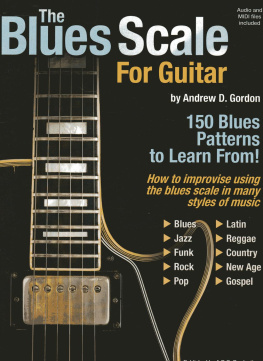


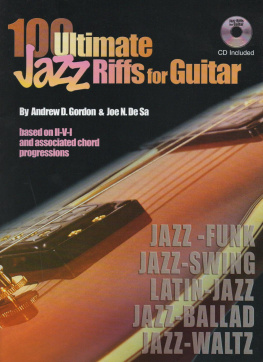
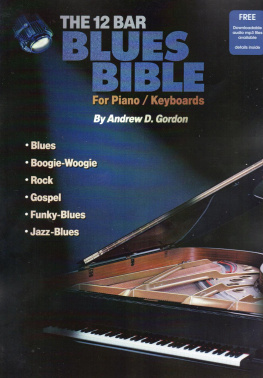

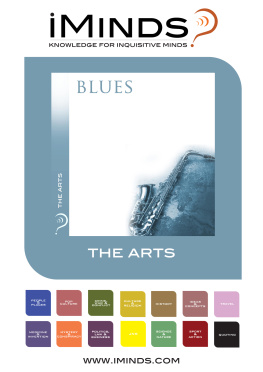
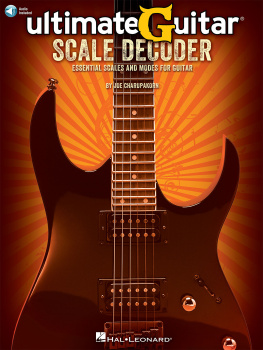
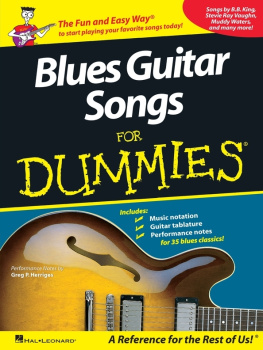
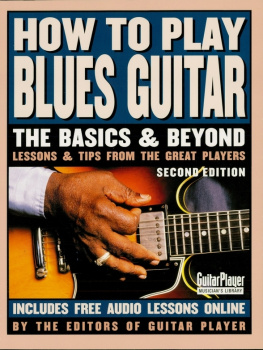
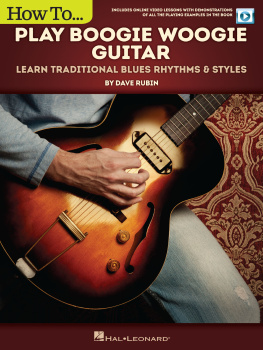
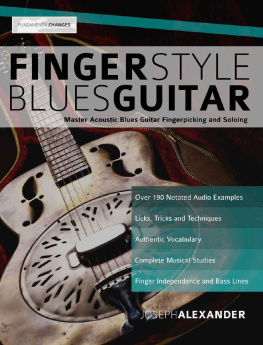
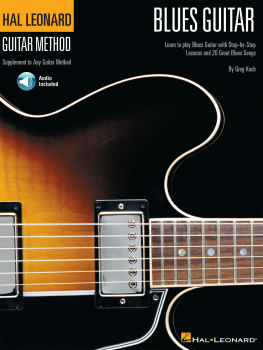

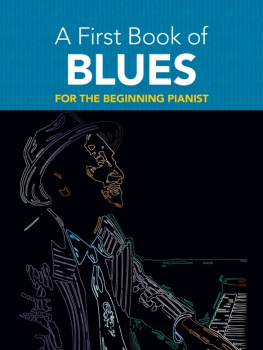
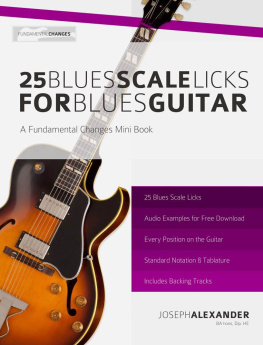




 Learning the blues scale is a great way to start your exploration into improvisation and can be applied to pretty much any style of music.
Learning the blues scale is a great way to start your exploration into improvisation and can be applied to pretty much any style of music.

